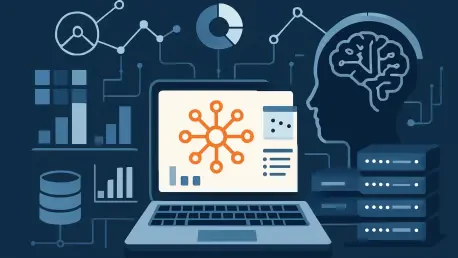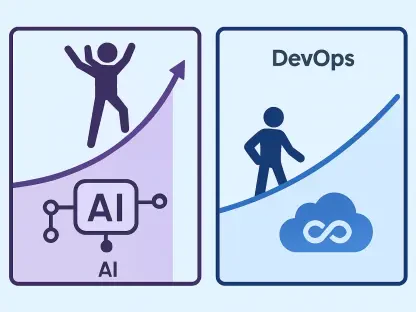Today, we’re thrilled to sit down with Vijay Raina, a renowned expert in enterprise SaaS technology and tools, who also provides thought leadership in software design and architecture. With years of experience in navigating the complex landscape of data management and cloud solutions, Vijay offers invaluable insights into how platforms like Snowflake are revolutionizing the way businesses leverage AI and data. In this conversation, we’ll explore the transformative power of AI data platforms, the intricacies of data security and performance, and the future of agentic AI in enterprise settings. Let’s dive into how these technologies are shaping the future of business innovation.
How did your early experiences with technology influence your journey into enterprise SaaS and software architecture?
My fascination with technology started at a young age, much like many in this field. I was always tinkering with computers, trying to understand how they worked, and building small programs just for fun. That curiosity led me to dive deep into software design during my early career, where I realized the potential of scalable, cloud-based solutions to solve real business problems. Working on enterprise SaaS tools exposed me to the challenges of managing massive datasets and ensuring seamless user experiences, which became the foundation of my expertise. Those early moments of discovery shaped my focus on creating systems that are not just functional but also adaptable to the evolving needs of businesses.
What role do AI data platforms play in helping businesses harness the power of artificial intelligence?
AI data platforms are game-changers for businesses looking to integrate AI into their operations. They act as a bridge between a company’s unique data and the AI tools that can derive insights from it. For instance, these platforms allow businesses to ask specific, context-driven questions—like identifying trends in customer behavior or pinpointing areas of operational inefficiency—that generic AI models can’t answer without access to that proprietary data. By centralizing and organizing data in a way that AI can easily tap into, these platforms enable companies to make smarter, faster decisions tailored to their specific needs.
Can you walk us through some of the core features that make a data platform effective for AI applications?
Absolutely. A robust AI data platform needs a few key components to shine. First, it should support fast data retrieval methods, like vector storage, which helps AI quickly find relevant information through techniques such as retrieval augmented generation, or RAG. This ensures the AI pulls the most pertinent data snippets for a given query. Second, the platform must handle live data querying—like pulling up-to-date sales figures—rather than relying solely on static documents. Finally, it’s about ease of use. The best platforms simplify complex processes, so developers and analysts can focus on insights rather than spending hours setting up systems. These elements together make the platform a powerful tool for AI-driven innovation.
How do modern data platforms ensure security when dealing with sensitive business information in AI workflows?
Security is paramount, especially when AI is accessing sensitive data. Modern platforms implement strict controls like role-based access, ensuring users only see data they’re authorized to view. They also incorporate mechanisms to prevent AI from inadvertently leaking confidential information by grounding responses in verified data sources and limiting outputs based on user permissions. For example, if someone queries revenue data, the system checks their access level before displaying results. Beyond that, there’s often a governance layer that monitors interactions and enforces policies, so businesses can trust that their data remains protected even as AI scales across the organization.
What makes querying data so efficient on cloud-native platforms compared to traditional systems?
The efficiency comes down to a fundamental shift in design—separating storage and compute. In traditional systems, scaling meant adding more servers for both storage and processing power, which was cumbersome and expensive. Cloud-native platforms allow you to scale these independently, so you can throw more processing power at a query without worrying about storage constraints, or vice versa. This flexibility, combined with optimizations like advanced caching and query planning, means you can handle enormous datasets and get results in seconds, not hours. It’s a night-and-day difference compared to older, monolithic architectures.
How do these platforms manage to integrate with data that’s stored outside their ecosystem?
Integration with external data sources is a critical capability. Most platforms offer two approaches: either they bring the external data into their environment for centralized management, or they query it directly where it resides using open formats like Iceberg. The latter is more common when dealing with data in cloud storage buckets or other systems, as it avoids duplication while still leveraging the platform’s powerful query engine. This hybrid approach ensures businesses aren’t forced to overhaul their existing setups, making adoption smoother and more cost-effective.
What excites you most about the future of agentic AI within enterprise data platforms?
I’m really excited about the potential for agentic AI to take on more autonomous roles within enterprises. Right now, most interactions are conversational—you ask, and the agent responds. But imagine agents proactively generating reports, identifying issues, or even suggesting strategic moves based on real-time data, all without human prompting. The challenge is capturing the unique context of an organization—its processes, culture, and goals—so these agents can operate with nuance. I believe we’re on the cusp of seeing breakthroughs in how agents understand and navigate business environments, which could redefine productivity.
What is your forecast for the evolution of AI data platforms over the next few years?
I think we’re heading toward even tighter integration between AI data platforms and enterprise workflows. Over the next few years, I expect these platforms to become more intuitive, with agents not just reacting to queries but anticipating needs based on historical patterns and organizational context. Security and trust will remain critical, with more emphasis on transparency—showing users exactly how answers are derived. Additionally, as data ecosystems grow more complex, platforms will likely evolve to handle diverse data types and sources seamlessly, becoming the backbone of decision-making in every industry. It’s an exciting time, and I believe we’ll see AI truly democratize access to insights in ways we’re only beginning to imagine.









